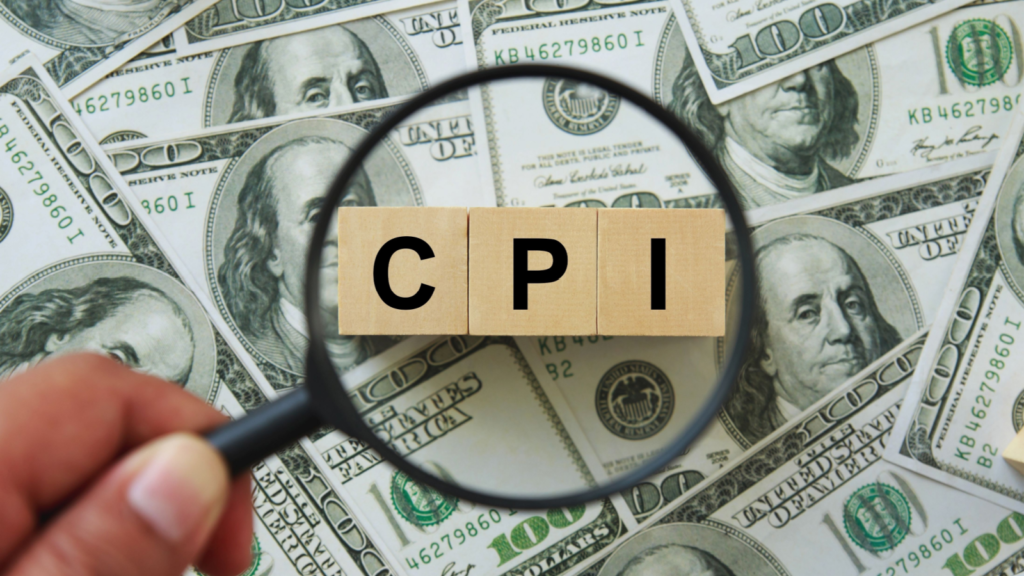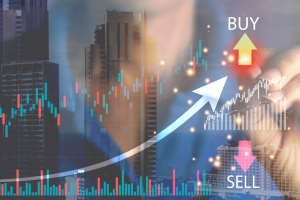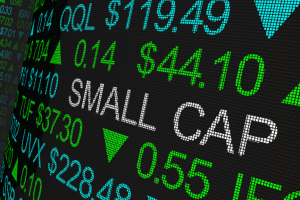
No curveballs from the April CPI data … this commodity is breaking out as Eric Fry suggested … another Fry recommendation for you … last call for the Masters in Trading Summit replay
This morning, we got the second of this week’s three inflation reports, and all things considered, it was a win.
April’s Consumer Price Index (CPI) increased 0.3% from March, which was slightly below the Dow Jones estimate of 0.4%. The year-over-year figure rose 3.4%, which was in line with expectations.
Core CPI, which strips out volatile food and energy prices, rose 0.3% on the month and 3.6% on the year, both as forecast.
For some context, the year-over-year core reading was the lowest since April 2021, and the monthly gain was the smallest since December.
While inflation hardly collapsed, you’ll note that we didn’t use the description “hotter than expected.” That’s the real win, as this year has brought multiple inflation reports that have surprised to the upside.
So, good news overall.
As I write early afternoon, the markets are up nicely since today’s CPI print breathes life into hopes of interest rate cuts from the Fed later this year.
Tomorrow we’ll get the Import/Export Inflation report. We’ll keep you updated.
Meanwhile, one of Eric Fry’s favorite commodities is breaking out, and hopefully you’re in the move
Let’s rewind to our April 8th Digest:
Gold set yet another all-time high earlier today – it’s seventh consecutive record peak.
Ignore it.
There’s another shiny metal that’s also soaring today. And if the Federal Reserve follows through with rate cuts in 2024, history shows its returns could outshine those of gold.
We were talking about copper.
As you can see below, the red metal is exploding here in 2024.

Here in the Digest, we ‘ve been copper bulls for years at this point, mostly due to research from our macro expert Eric Fry.
It was back in 2020 that Eric made the case for a new “commodity supercycle” that would send the price of certain copper-related investments stratospheric.
Eric was right. By July 2021, his Speculator subscribers closed their option trade on copper mining giant, Freeport-McMoRan (FCX), for a 1,000%+ return.
Since then, the commodity supercycle and copper’s price have taken a breather. But last fall, Eric urged investors to get ready for round 2 of the supercycle:
The “commodity comeback” could begin its reign as soon as 2024, which is only a few short months away…
And that could mean big things for a long-struggling corner of the market… and soon…
This year’s copper surge is proving Eric right yet again, but if you haven’t gotten in yet, this move appears to have plenty of more juice left
You’re probably already long copper without knowing it.
That’s because if you believe rate cuts are coming in 2024… if you’re a tech/AI bull this decade… or if you support the green energy transition… then you’re bullish on copper by proxy. That’s because copper is one of the most important industrial metals in the world.
It’s critical for a healthy, growing global economy… it’s a “must have” for tech/AI advancements (due to massive computing needs and copper’s role in computing hardware) … and it’s a lynchpin component of green energy technologies. Yet studies show that our current copper supply is insufficient to meet coming demand.
We’ve spilled plenty of ink about the gross imbalance between copper’s supply and the coming tsunami demand, so I won’t rehash those details in today’s Digest. But I will point out that we’re not the only one bullish on copper.
Stanley Druckenmiller is one of the greatest traders of all time. He’s credited alongside George Soros as “breaking the Bank of England” when the two made $1 billion from shorting the pound.
Well, here’s “The Druck” from last week in an interview with CNBC:
Copper is a pretty simple story, takes about 12 years, greenfield to produce copper, and you got EVs, the grid, data centers, and believe it or not munitions.
These missiles all got enough copper in them and the world’s getting hot that we just think the supply-demand situation is incredible for the next five or six years.
Meanwhile, yesterday, The Wall Street Journal featured an article titled “Why the World Has Gone Cuckoo for Copper.” It highlights how the U.S. and China are now competing for more copper.
Bottom line: The case for copper remains incredibly bullish. This is a long-term, no-brainer growth story.
If you’re looking for a way to play it…
You can begin your research with the Global X Copper Miners ETF, COPX. It holds a basket of top copper mining companies.
As you can see below, it’s up 49% since Eric’s reference to the “commodity comeback” that we quoted in our 10/30/23 Digest. That nearly doubles the S&P’s return.

If you want to invest in a specific miner, Freeport McMoRan (FCX), which we referenced earlier, is a top-shelf option.
While Eric’s Speculator subscribers cashed in on their FCX call options for 1,000%+ returns, Eric’s Investment Report subscribers still own the stock outright. They’re sitting on 322% returns as I write Wednesday morning.
Meanwhile, Eric has another play he urges investors to consider…
In 2000, Elon Musk merged his online bank, X.com, with Peter Thiel’s software company, Confinity, to form PayPal. Just two years later, Musk and Thiel sold their merged entity to eBay for $1.5 billion.
A few years later, eBay spun out PayPal as a separately traded company, and it has been a financial juggernaut ever since.
Today, 80% of the top 1,500 retailers in North America and Europe feature PayPal in their digital wallets – which is nearly three times more than the No. 2 player, Apple Pay.
Despite this sector dominance, the last several years have been brutal for PYPL investors. As you can see below, the stock has imploded 79% while the S&P climbed 18%.

While this represents portfolio carnage for PYPL investors who have had to sit through this, Eric believes it’s a fantastic buying opportunity for investors just discovering PYPL. Even more so because PYPL is no longer just a digital payment processing company.
Here’s Eric with more on this:
While PayPal spearheaded the digital commerce revolution, I believe it is now at the forefront of the AI Revolution. The company is fortifying its market leadership by integrating leading-edge AI and machine-learning processes into key aspects of its operations….
PayPal is applying AI-derived insights from its vast customer base to optimize the checkout process for merchants and consumers.
Eric dives into the details of one way that PYPL is applying AI to its core operation – reducing both false negatives (declines) and false positives (fraudulent charges) during the checkout process. This is big since both forms of false readings cause billions of dollars in lost revenue.
We won’t get into the weeds of those details in today’s Digest due to length, so let’s jump to Eric’s takeaway:
I expect PayPal’s current discounted valuation to disappear as the company enters a new growth phase – and as its AI capabilities fatten the profit margins on that growth…
PayPal is a promising contender in the ever-competitive and ever-advancing AI boom.
Let’s use Elon Musk’s connection to PayPal to update you on last week’s drama with Musk’s company, Neuralink
In last Thursday’s Digest, we highlighted PRIME, which stands for “Precise Robotically Implanted Brain-Computer Interface.” It comes from Elon Musk’s company Neuralink.
To put it simply, PRIME is Musk’s attempt at merging the human brain with artificial intelligence.
Eric had recently profiled PRIME for his subscribers, which we borrowed from in last Thursday’s Digest. Here’s the quick recap:
Musk and his team at Neuralink built a unique kind of brain surgeon…
It’s a robot, called the “R1,” that can precisely implant a special device in a region of the brain that controls the intention to move.
Neuralink’s medical device, called the “N1,” has more than 1,000 electrodes attached to 64 threads, which amplifies its brain-reading potential.
Because the N1 threads are thinner than human hairs, they can’t be inserted by hand. But Neuralink’s R1 robot can do the job. It can target specific parts of the brain and insert all 64 threads in only about 15 minutes.
That procedure, hence, is known as PRIME.
On the day we published that Digest, news broke that the first PRIME subject was having issues with the technology. Basically, a number of threads had retracted from the patient’s brain. It wasn’t dangerous, just a degrading of the tech’s effectiveness.
Here’s the update from USA Today:
Neuralink addressed this issue, modifying the “recording algorithm” to be more sensitive to the flow of signals between clusters of nerve cells in the brain. And also “improved” the techniques used to translate those signals into cursor movements.
Neuralink’s fixes “produced a rapid and sustained improvement in BPS, that has now superseded Noland’s initial performance,” the blog post said. BPS, or bits-per-second is a standard used to measure speed and accuracy of cursor control.
In Eric’s piece that highlighted Neuralink, he was interested in the ways to invest in this cutting-edge technology. While Neuralink is a private company (making a direct investment impossible for most investors today), Eric has found one well-known tech play that offers exposure to Neuralink’s growth. He put the details inside a special report called How to Profit From Elon Musk’s Neuralink.
Before we sign off, today is your last chance to watch the replay of last week’s Masters in Trading Summit with Jonathan Rose
Jonathan is the latest addition to our corporate family, helming Masters in Trading Live. He’s a world-class trader, but more relevant to you and your bank account, he’s a world-class teacher of trading.
I’ll let these screenshots from Jonathan’s followers illustrate:



We’re thrilled to be able to bring you a trader of Jonathan’s caliber who’s helping so many investors generate lifechanging trading profits. To watch the free replay of Jonathan’s Masters in Trading Summit before we take it down at midnight, click here.
Wrapping up, tune in tomorrow for the results of the third and final inflation report this week. Meanwhile, give copper and PayPal some consideration today.
We’ll keep you updated on all these stories here in the Digest.
Have a good evening,
Jeff Remsburg




